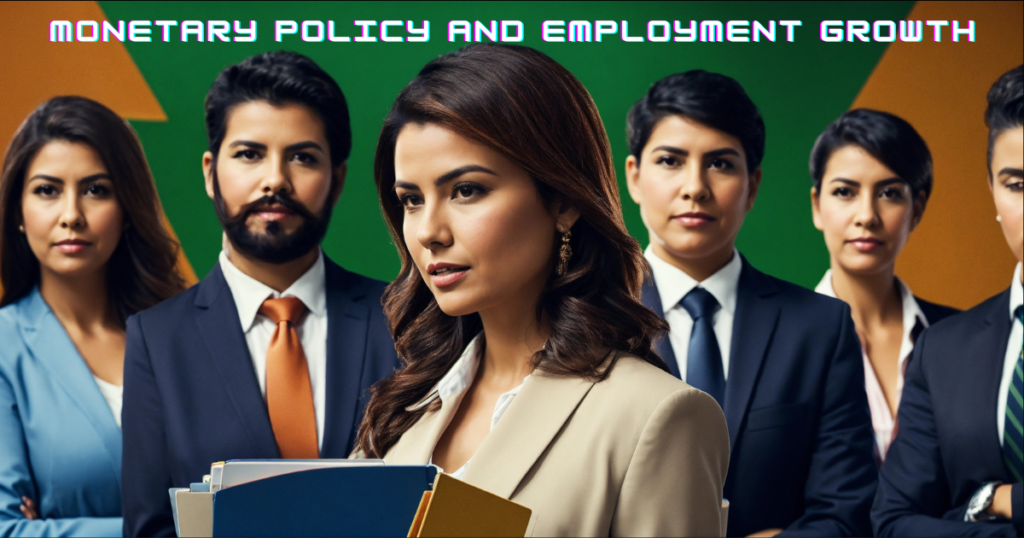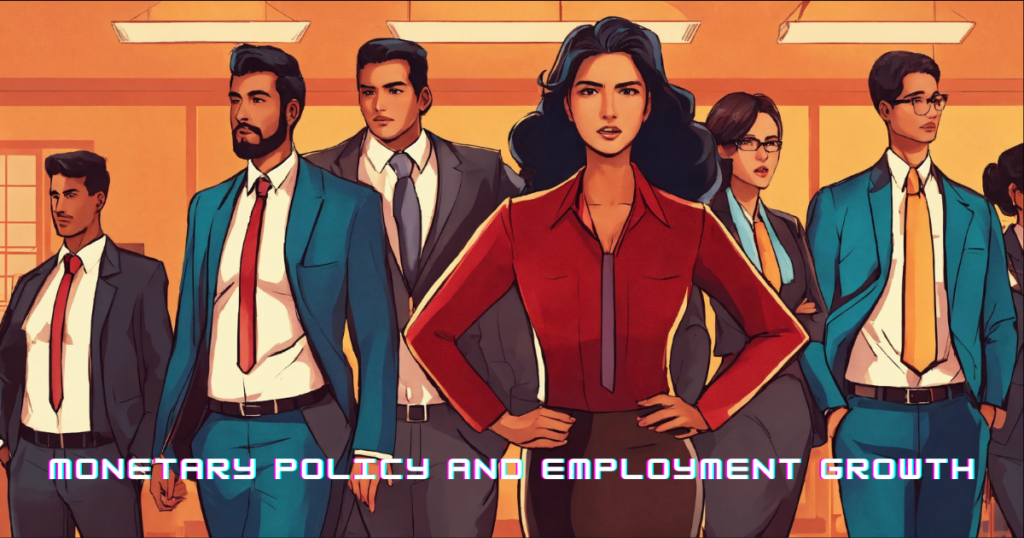Introduction
Monetary policy, the strategic management of a nation’s money supply and interest rates, significantly influences employment dynamics within an economy. As central banks grapple with the delicate balance between price stability and job creation, they encounter both challenges and opportunities. In this article, we delve into the intricate relationship between monetary policy and employment, exploring hurdles faced and potential pathways for fostering better job opportunities.

Relationship Between Monetary Policy and Employment
1. The Dual Mandate: Price Stability and Employment
Central banks worldwide often operate under a dual mandate: to achieve both price stability (low inflation) and maximum sustainable employment. While price stability remains a primary goal, employment is equally critical. But how does monetary policy impact job creation?
1.1 The Phillips Curve Dilemma
The Phillips Curve, initially proposed by economist A.W. Phillips, posits an inverse relationship between unemployment and inflation. Traditionally, when unemployment decreases, inflation tends to rise, and vice versa. However, this relationship has become less predictable in recent decades.
1.2 The Missing Inflation Puzzle
Despite historically low unemployment rates before the COVID-19 recession, inflation remained stubbornly below the Federal Reserve’s 2 percent target. Economists grapple with understanding why this once-reliable relationship has weakened. The challenge lies in reconciling low unemployment with subdued inflation.
2. Tools and Challenges in Driven of Monetary Policy and Employment
2.1 Interest Rate Policy
- Challenge: The effectiveness of interest rate cuts in boosting employment has diminished. Extremely low rates may not spur additional investment or hiring.
- Opportunity: The Federal Reserve can maintain accommodative rates to support economic recovery, but clear communication is essential to manage inflation expectations.
2.2 Quantitative Easing (QE)
- Challenge: QE, where central banks buy financial assets, can boost asset prices but may not directly translate into job creation.
- Opportunity: By targeting specific assets (such as mortgage-backed securities), QE can indirectly support housing and construction sectors, creating jobs.
2.3 Forward Guidance–Monetary Policy and Employment
- Challenge: Communicating future policy intentions effectively is crucial. Missteps can create uncertainty.
- Opportunity: Clear forward guidance can anchor expectations, influencing investment decisions and employment prospects.
3. Inclusive Monetary Policy: Monetary Policy and Employment
3.1 Targeted Demographics
- Challenge: Monetary policy often affects different demographic groups unevenly.
- Opportunity: By considering targeted interventions, such as supporting minority-owned businesses or addressing gender disparities, central banks can promote broad-based employment growth.
3.2 Labor Market Tightness
- Challenge: Achieving full employment requires monitoring labor market tightness.
- Opportunity: A tight labor market encourages employers to hire from a broader pool of workers, reducing disparities.
4. Conclusion: A Holistic Approach Monetary Policy and Employment
Monetary policy alone cannot solve all employment-related issues. It requires collaboration with fiscal policy and other government policymakers. Inclusive monetary policy, clear communication, and a long-term perspective are essential for fostering sustainable job opportunities.
Remember, the road to maximum employment is multifaceted, and central banks must adapt their strategies to address evolving economic realities. Monetary Policy and Employment

FAQs and Answer–
How does monetary policy increase employment? Monetary Policy and Employment
Monetary policy influences employment primarily through the management of interest rates and the money supply. When a central bank aims to boost employment, it typically adopts expansionary measures. This often involves lowering interest rates to make borrowing more attractive for businesses and individuals. As borrowing costs decrease, businesses are encouraged to invest in expansion and job creation, leading to increased economic activity and higher employment levels.
Additionally, by adjusting the money supply through mechanisms like open market operations, central banks can inject liquidity into the economy. This liquidity helps facilitate increased spending and investment, contributing to overall economic growth and job creation. In summary, the strategic manipulation of interest rates and money supply by central banks is the key mechanism through which monetary policy seeks to increase employment.
What is the relationship between monetary policy and economic growth?
The relationship between monetary policy and economic growth is intricate and dynamic. Monetary policy plays a crucial role in influencing various economic factors that collectively contribute to or impede growth. Key mechanisms include interest rate management, open market operations, and reserve requirements.
By adjusting interest rates, central banks can impact borrowing costs, affecting the willingness of businesses and individuals to invest and spend. Lower interest rates typically stimulate economic activity, fostering growth. Similarly, open market operations, where central banks buy or sell securities, can influence the money supply, providing liquidity to spur economic expansion.
However, the relationship is not unidirectional. Central banks must carefully balance growth objectives with considerations for inflation control. Excessive monetary stimulus can lead to inflationary pressures, which may ultimately hinder sustained economic growth. Hence, achieving a harmonious equilibrium between stimulating growth and maintaining price stability is a critical aspect of the relationship between monetary policy and economic growth.
How does monetary policy impact the growth rate?
Monetary policy impacts the growth rate by influencing the conditions for borrowing, spending, and investment in the economy. When a central bank adopts expansionary monetary policies, such as lowering interest rates or implementing quantitative easing, it aims to encourage borrowing and spending, thereby fostering economic growth.
Lowering interest rates makes borrowing more affordable, encouraging businesses to invest in expansion projects and individuals to make significant purchases like homes and cars. Increased spending and investment contribute to higher economic growth rates. Additionally, by injecting liquidity into the financial system through open market operations, central banks provide the necessary funds for banks to lend, further supporting economic expansion.
Conversely, contractionary monetary policies involve raising interest rates or reducing the money supply to cool down an overheating economy and control inflation. While these measures can help maintain price stability, they may also slow down economic growth.
In essence, the impact of monetary policy on the growth rate is rooted in its ability to shape the cost of borrowing and the availability of funds, influencing the spending and investment behavior of businesses and consumers.
Disclaimer
This article has been created on the basis of internal data, information available publicly, and other reliable sources to be believed. The article may also include information which are the personal views/opinions of the authors. The information included in this article is for general, educational, and awareness purposes only and is not a full disclosure of every material fact.
All the information on this website i.e. World Virtual CFO – is published in good faith and for general information purposes only. World Virtual CFO does not make any warranties about the completeness, reliability, and accuracy of this information. These are my views for only information purposes. Any action you take upon the information you find on this website (World Virtual CFO), is strictly at your own risk. World Virtual CFO will not be liable for any losses and/or damages in connection with using our website. For details please refer to our disclaimer page.
The views expressed in this article are those of the author and not necessarily those of the Federal Reserve System.
Dr. Dinesh Sharma is an award-winning CFO and AI strategist with over two decades of experience in financial leadership, digital transformation, and business optimization. As the founder of multiple niche platforms—including WorldVirtualCFO.com—he empowers professionals and organizations with strategic insights, system structuring, and innovative tools for sustainable growth. His blogs and e-books blend precision with vision, making complex financial and technological concepts accessible and actionable.